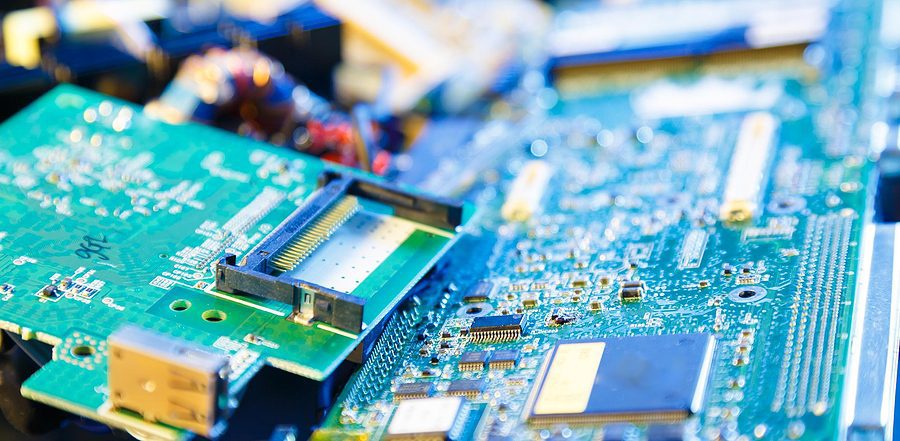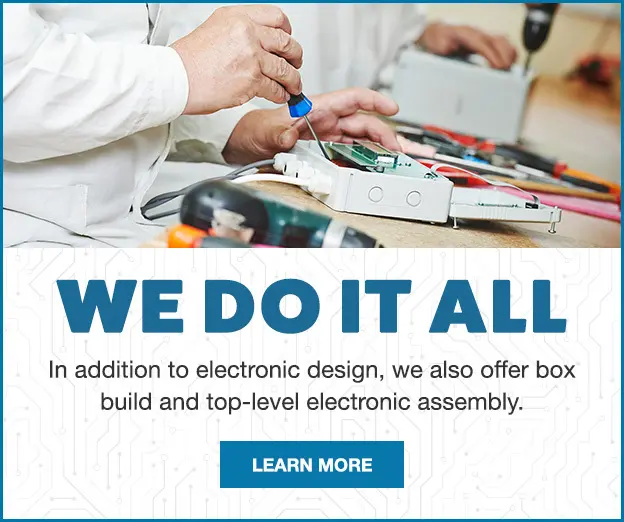Electronic Manufacturing Terminology: What is the Difference Between PCB and PCBA?
PCB and PCBA are related to each other. They are both part of the electronic manufacturing process and while some may want to use them interchangeably, they are actually different from one another. A PCB is a printed circuit board, while a PCBA is the process of assembling the components for the board to function as needed for its intended application.

What is a PCB?
PCBs are a crucial element of all electronic devices, and mechanically support and electrically connect the electronic components. The boards themselves are typically made of fiberglass or a composite epoxy. The boards contain the conductive pathways that connect the individual parts of the board and are printed onto the board according to the design. These printed circuits and conducting materials are typically made of copper and coated with tin-lead to avoid oxidation. PCBs are used in consumer electronics, heavy machinery, robotics, vehicles, and medical equipment.
Types of PCBs
-
Single-Layer PCBs
Single-layer PCBs are the simplest type. They are coated with a single layer of conducting material and a layer of solder. The components of the PCBs are marked with a silkscreen. Because they are simpler, they are less expensive and easy to design and build. They can often be ordered in high volumes without issue. However, the single layer may not be sufficient for devices that require a higher number of components and connections.
-
Double-Layer PCBs
These PCBs have a layer of conducting material on both the top and the bottom on the board, giving them more flexibility and a smaller size than a single-layer PCB. The conductive material on either side of the board is connected via through-holes or surface mounts.
-
Multi-Layer PCBs
Multi-layer printed circuit boards have more than two conductive layers. Because of the increase in space due to the multiple layers, they are best used in complex applications. They typically contain an even number of boards to avoid problems such as warping. Because of the increased circuit density, multi-layer PCBs are more powerful, more durable, and can be smaller and more lightweight. However, the cost to produce a multi-layer PCB is higher, requiring more time and skill to design and build.
-
Flexible PCBs
Flexible PCBs are defined by the flexible nature of their construction and can be single, double, or multi-layer. Flexible PCBs are built to withstand being flexed repeatedly on a regular basis and are found in so many modern conveniences like laptops, cell phones, and robotic arms.

-
Rigid PCBs
Rigid PCBs are also able to be single, double, or multi-layer, but use a rigid material. Once a rigid PCB is manufactured it cannot be modified into any other shape.
-
Flex-Rigid PCBs
The circuits consist of multiple layers in a combination of rigid and flex boards with a higher component density.
What is PCBA?
PCBA, which refers to Printed Circuit Board Assembly, is a process, not a product. PCBA refers to the process of assembling the PCB with the necessary components.
PCBA Process
There are two main methods for assembling PCBs.
-
Surface-Mount Technology (SMT)
SMT is the highly-automated process of mounting electronic components right to the surface of a PCB, enabling manufacturers to place complex circuits into small components. The steps involved are preparing the PCB, placing the components, reflow soldering, and inspection.
-
Through-Hole
Through-hole is an older method, yet creates a stronger connection between the board and the components. This assembly process involves drilling holes into a PCB to attach the electronic components or leads. The steps involve drilling the holes, placing the leads, soldering, and inspection.
Start Your Quote Now!A PCB is the first step in the process of building an electronic device, but PCBA is necessary for a completed and functional board. Finding the right partner for your PCB design and assembly services is essential for manufacturing the electronic components of your product. With our vast industry knowledge and experience, we’re confident we can help you build a better product. Contact Levison Enterprises today for more information about our capabilities and a free quote on your next project.